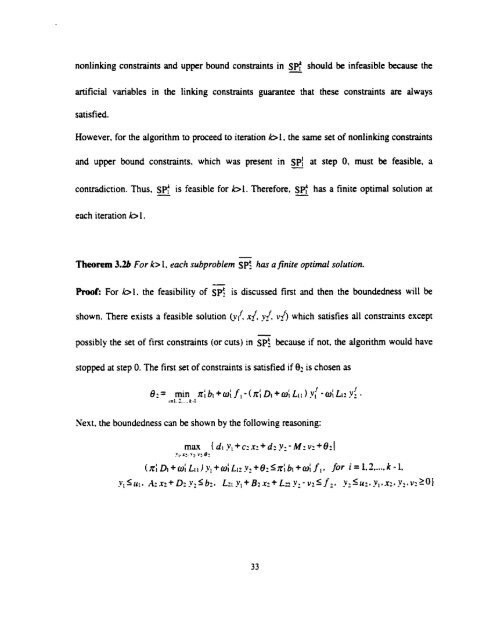X - UWSpace - University of Waterloo
X - UWSpace - University of Waterloo
X - UWSpace - University of Waterloo
Create successful ePaper yourself
Turn your PDF publications into a flip-book with our unique Google optimized e-Paper software.
nonlinking constraints and upper bound constraints in S# - should be infeasible because the<br />
anificial variables in the linking constraints guarantee that these constraints are always<br />
satisfied.<br />
However. for the aigorithm to proceed to iteration k>l, the sarne set <strong>of</strong> nonlinking constraints<br />
and upper bound constraints. which was present in SPI - at step O, must be feasible. a<br />
c~n~diction. Thus, SP: - is feasible for bl. Therefore, spf - has a finite optimal solution at<br />
each iteration k>l .<br />
-<br />
Theorem 3.26 For k> 1. each subproblem spf has ajinite optimal solution.<br />
Pro<strong>of</strong>: For bl. the feasibility <strong>of</strong> 3 is discussed fint and then the boundedness will be<br />
shown. There exists a feasible solution ~v{? xi, yd v/) which satisfies dl constraints except<br />
possibly the set <strong>of</strong> first constraints (or cuts) in 3 because if not, the algorithm would have<br />
stopped ai step O. The first set <strong>of</strong> consuainu is satisfied if Bz is chosen as<br />
Next. the boundedness cm be shown by the following reasoning:
















